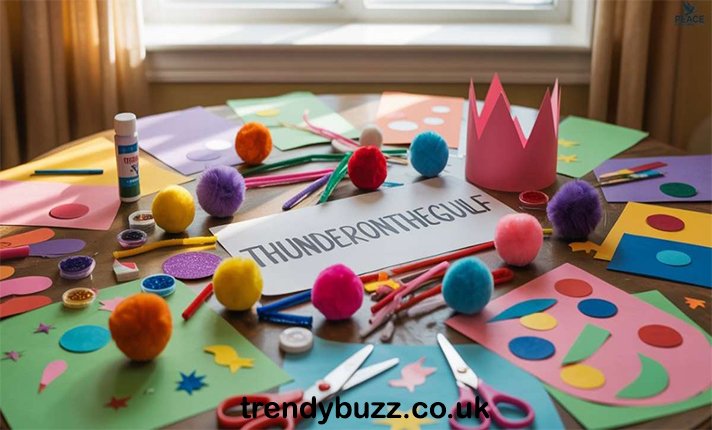A short history and the festival’s place on the Gulf Coast
Thunder on the Gulf began as a high-energy weekend centered on powerboat racing, but over time organizers added an arts and crafts component that has grown into an independent attraction. Local artisans, hobbyists, and makers now gather alongside the races to sell coastal-inspired work, run demos, and host workshops that invite visitors to try making things with their own hands. The arts segment brings a quieter, more reflective rhythm to an otherwise adrenaline-fueled weekend, and creates space for the kinds of conversations that happen when someone explains how a piece was made. The result is a festival that pairs spectacle with craft in a way that keeps people coming back.
What you’ll actually find: booths, demonstrations, and hands-on fun
Expect a mix of traditional craft booths and galleries of original work. Vendors typically sell handmade jewelry, pottery, woodwork, coastal home decor, original paintings and prints, candles, soaps, textiles, and small-scale furniture. Many booths feature live demonstrations, where potters throw on wheels, woodcarvers shape small pieces, and painters work on coastal scenes in real time. Children’s craft stations are often present and aimed at families who want a short, creative break between races or between other festival activities.
Why the Gulf shapes what artists make
The Gulf Coast is thick with visual cues that translate easily into craft: shells, sea glass, driftwood, salt-weathered colors, and the loose geometry of waves. Artists at Thunder on the Gulf frequently mine those materials and motifs to create pieces that feel local. This is not merely decorative. For many makers, the coastline supplies both materials and stories. A resin table with embedded shells becomes evidence of a place. A painting of marsh grass references family memory. The result is work that reads like a small archive of local life.
Featured types of crafts and techniques worth watching
There are recurring categories that draw both casual shoppers and serious collectors. Handmade jewelry often uses sea glass, brass fittings, and shells set into minimalist designs. Pottery ranges from salt-fired coastal glazes to functional ceramics with simple, workaday lines. Woodworkers present coastal furniture, frames, and small carving work. Mixed-media artists combine photography, found objects, and paint to produce pieces that capture weather and tide. Live demonstrations make it possible to see the skill behind a finished object and to appreciate how time and handwork change value.
How artists and the community benefit
The arts presence transforms visitor spending into direct support for local creators. For many small studios, one strong festival weekend can provide a meaningful portion of annual revenue. The event also builds visibility: makers leave with email subscribers, wholesale leads, and commissions. Organizers commonly direct a portion of proceeds to arts education or community nonprofits, and auctions or benefit sales sometimes accompany the festival component. That amplifies the festival’s value beyond commerce and into cultural investment.
Practical tips for visitors who want the best experience
- Wear comfortable shoes and sun protection. The arts area can sit on sand, grass, or pavement depending on layout.
- Bring cash and card. Small vendors appreciate exact change, but many accept mobile payments.
- Look for demonstration schedules early. If you want to watch a potter or take a short workshop, arrive around the listed demo times.
- Pack a tote or small rolling cart for purchases. A wooden sculpture or framed print is easier to manage with a wheeled bag.
- Talk to artists. Asking why someone chose a material, or how they learned a technique, often results in memorable context that increases appreciation for the work.
Buying with intention: what to look for
If you want an object that lasts, prioritize artisan-made techniques over mass-produced finish. Check for attention to detail: smooth joins in wood, consistent glazing on ceramics, secure settings in jewelry, and clean edges on prints. Ask about care instructions and true origin—many makers will explain the sources of materials, which matters if you prefer locally gathered shells or sustainably sourced wood. A careful question now can save frustration later.
The festival as a place to learn, not just shop
Beyond sales, the arts and crafts area at Thunder on the Gulf operates as a weekend-long classroom. Short workshops often cover bead-stringing, shell mosaics, simple printmaking, and introductory woodworking. These sessions are typically priced for accessibility and are family friendly. If you want a tangible souvenir you helped make, look for the “kids and community” booths that advertise drop-in activities.
How to support artists after the festival
If you find an artist you like, follow them on social media, sign up for their newsletter, or commission a custom piece if that option is available. Many makers accept orders through direct message or their website. Sharing photos of your purchases and tagging the artist widens their reach more than a single sale. Consider leaving a review or recommending them to local shops that buy wholesale; recommendations create steady income beyond festival weekends and help sustain creative livelihoods year round.
Leaving with something more than a purchase
When you walk away from the arts area, you’ll likely carry both an object and a story: who made it, where the materials came from, and why the form matters. That storytelling element is what distinguishes festival-made work from factory goods. It is also why arts programming at Thunder on the Gulf has steadily grown: it layers meaning onto an already lively weekend, broadens the audience, and anchors the celebration of speed and sound to a slower practice of making.
Final thoughts
If you go to Thunder on the Gulf expecting only engines and waves, plan a detour to the arts and crafts area. You will find high-quality, locally grounded work and a selection of hands-on activities that fit all ages. The arts segment rounds out the festival experience, turning a single weekend into a cultural snapshot of Gulf Coast craftsmanship and the people who carry that tradition forward.
